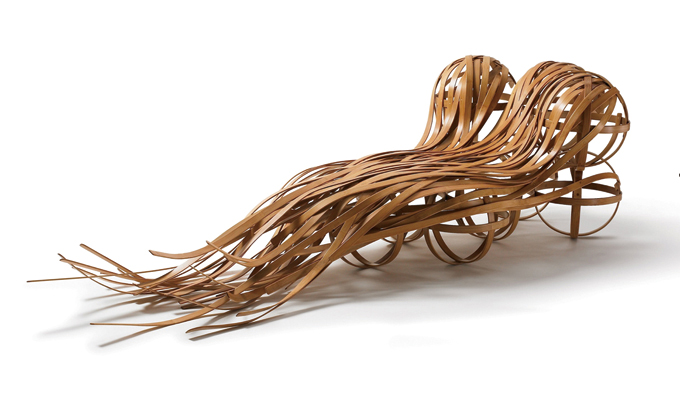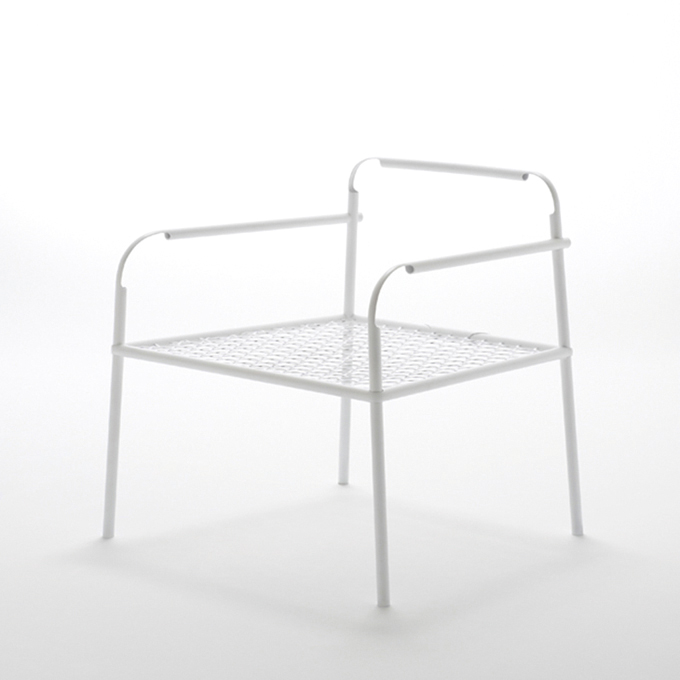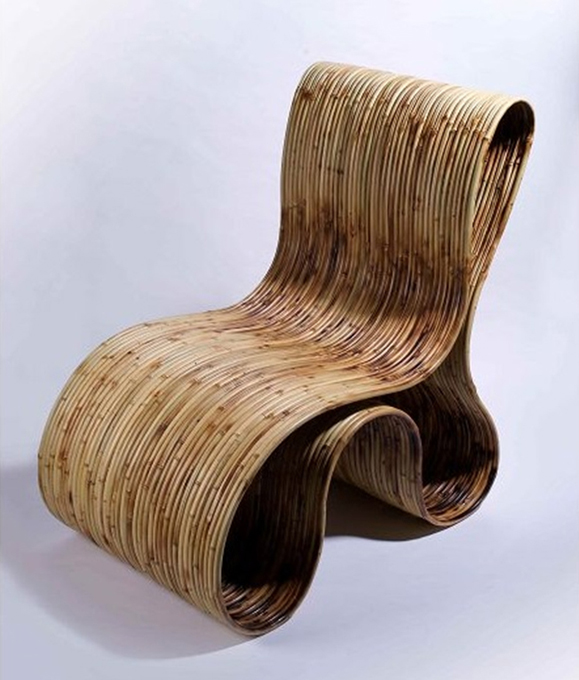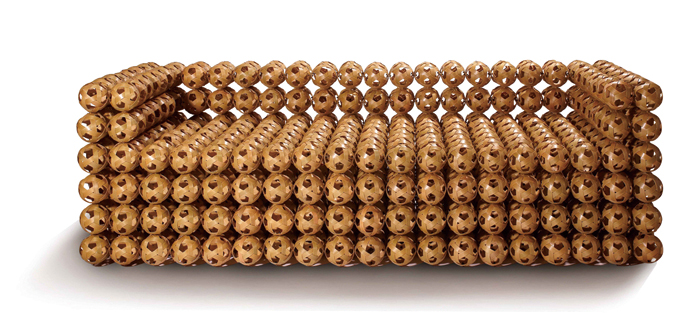Taiwan Modern Chairs Turn Heads at Milan Furniture Show
Taiwan is the only country in Southeast Asia and Greater China exhibiting at Milan's Triennale Design Museum for three years in a row
2013/12/17 | By Michelle HsuThe National Taiwan Craft Research and Development Institute (NTCRI) made its third appearance at the Salone Internazionale del Mobile (or the Milan Furniture Fair) 2013. It was the only organization from the Southeast Asia and greater China area to exhibit at the international show, which was held April 9-14 at Milan's Triennale Design Museum.
Held annually in late spring or early summer, Milan Furniture Fair is known as the place to see up and coming trends in the furniture industry, making it a mecca for international design fans. Every year, more than 2,500 design brands announce their latest works at the show. The fair also serves as an international venue for new designers to exhibit their work.
NTCRI organized an exhibition of furniture items on display in Milan through September 2013. Adopting the theme of "Taiwan Modern Chairs Seen in Taiwan," the exhibit evoked the intimate relationship between furniture and people's daily life, addressing how modern chairs and everyday living are linked and how lives can be enhanced by aesthetic crafts and eco-friendly designs.
According to the NTCRI, the organization's "Taiwan Modern Chairs" exhibit drew an enthusiastic response from the show participants and international media, even appearing on the front page of a Swedish newspaper. The French magazine Cooperative Design called the exhibition a "Perfect Display of Oriental Art." The NTCRI estimated that around 2,000 people visited the Taiwan pavilion at the fair, including design experts, international media and name brand representatives and overseas buyers. Among them were Livia Peraldo Matton, editor-in-chief of Italian magazine ELLE Deco; Greta Arcila, editor-in-chief of Glocal Magazine; and Natacha Prihnenko, international exhibition chief of Hermes. Response was enthusiastic at the exhibition, which again highlighted Taiwan's excellence in craft-making.
"Taiwan Modern Chairs" included the works of 17 designers and craftsmen selected by the NTCRI. The theme for 2013, "Eco Arts," was an extension of "Transformation" for the 2010 show and "Street Life" for 2011. It had an environmental focus and demonstrated how a combination of traditional craftsmanship and modern design can create value. Each piece represented the result of countless hours of work and breakthroughs in craftsmanship. The following eight pieces are especially worth mentioning:
1. Flow
"Flow" is made of moso bamboo and uses nine interconnected spheres as its base. Its main feature is a crisscross pattern of bamboo slices carefully hand woven by the artist, resulting in a chair that looks as light and graceful as cloud. With a carefree and unrestrained design style, the chair allows people to sit, relax and let their imagination roam.
2. Tutu
The hexagonal-shaped "Tutu" is a bamboo cage in a shape similar to the bamboo shields that Taiwan people used to beat the heat in the past. Designer Luo Yu-fen and bamboo craftswoman Su Su-ren captured a delicate feminine spirit in the "Tutu" inspired pedestal of a stool, bringing a soothing feeling to the feet as people sit on it. Cotton and hemp were used to make the stool cushion, with results both practical and exquisite.
3. Three Generation in One Stool Set
Creators: Tsai Yi-cheng, Chen Mao-hui; materials: draft wood

4. Commemorating Dailiness 
These stools are made of three contrasting materials: greywacke, Taiwan zelkova and stainless steel. The use of greywacke symbolizes things of the past. The work not only commemorates the past but also celebrates things that are still living. With its greywacke seat and wooden legs, the stools are the perfect mixture of rock sculpture and everyday furniture, highlighting remarkable craftsmanship that is incorporated into the work.
5. Bamboo Steel
In 2010, Japan-based design team Nendo was invited to Taiwan to work with bamboo craftswoman Chiu Chin-tuan. They applied the same principle for making bamboo-tube furniture to the production of iron-tube furniture, adding beauty and a human warmth to a material that otherwise has a cold and distant look and feel. At the same time, the collaboration between Japanese designers and Taiwan craftsmen found a new way to revitalize traditional craft-making. The Bamboo Steel is a masterpiece of their collaboration.
6. Wave
Fernando and Humberto Campana, brothers and designers from Brazil, worked with outstanding local craftsmen to create this chair. The chair is made with heated and bent bamboo sections, resulting in the near-perfect aesthetic wave of the chair. The designers' main inspiration was "Wave," a song by famous Brazilian musician Tom Jobin from the 1960s. The song's light bossa nova rhythm matches the chair's wavy outline. It represents a new way of working with bent bamboo and sets a new standard for craft-making. The chair has put Taiwan's furniture craftsmanship on the global map.
7. Bubble Sofa
The main attraction of this chair is the replacement of a complex sofa structure with the repetition of a single element: a series of small, ball-shaped objects made with bamboo. The simple design highlights the chair, which is easy to make and use.
8. Cocoon Plan: Sofa
In the old days, farmers were known to make bamboo hats by filling the hats' bamboo frame with silkworms that are about to form cocoons. Since there are no corners for them to produce cocoons at the bamboo frame, they spit out silk that covers the entire bamboo frame, resulting in a water-resisting, durable bamboo hat. This real-life process is the idea behind the sofa, which has a bamboo frame with a silk surface. The wisdom of our ancestors is reflected in this sofa, which includes two bamboo-made pieces in the shape of silkworm cocoons. The Cocoon Plan Sofa comes in two versions: one with an exposed bamboo frame only and the other covered with real silk.




